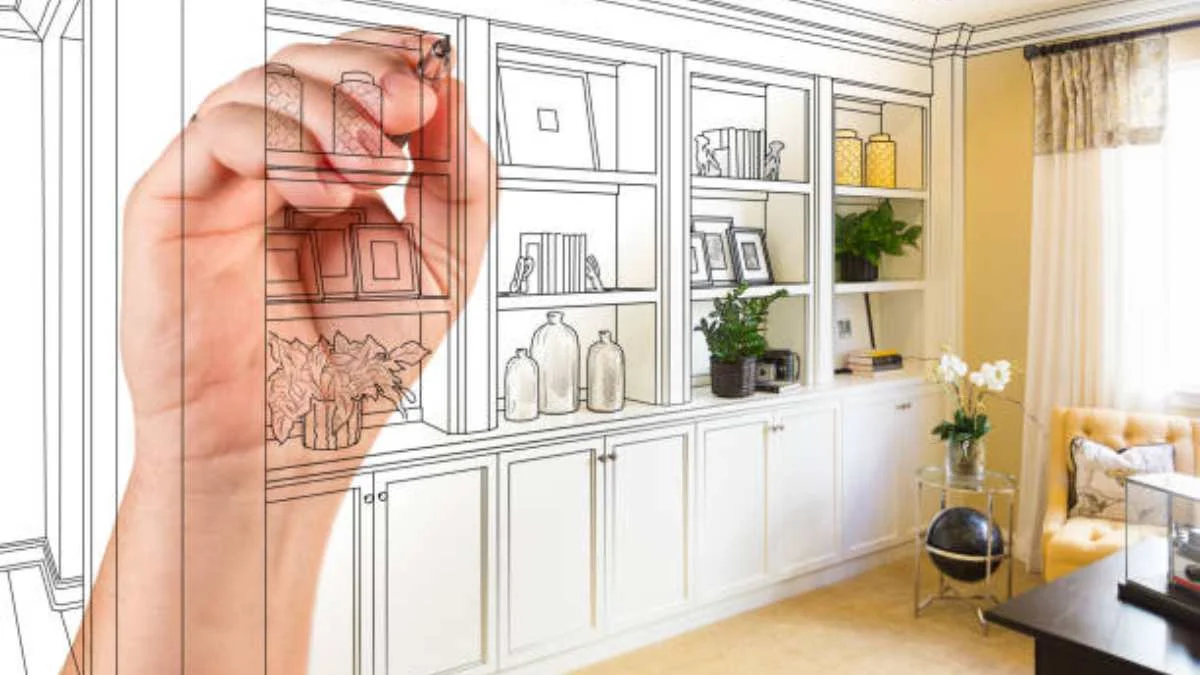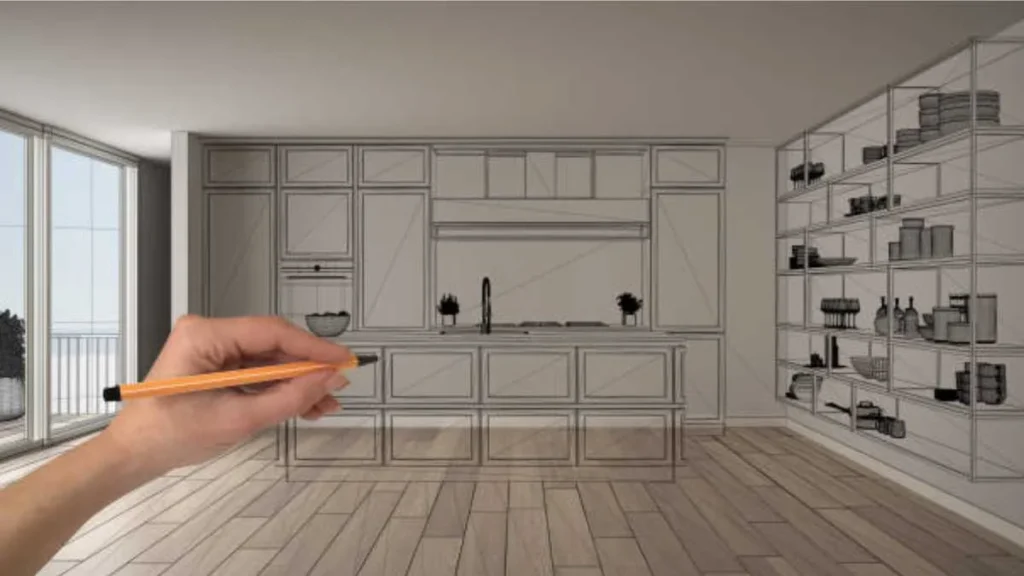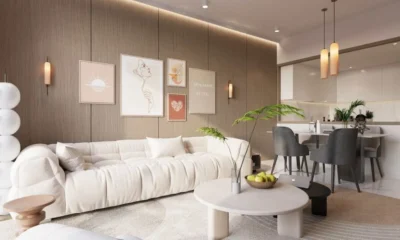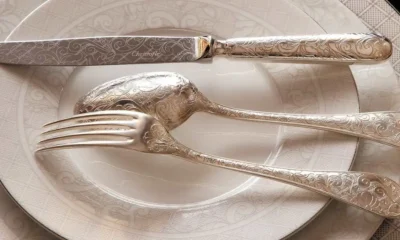HOME IMPROVEMENT
The Art of Custom Cabinet Design: Transforming Your Home’s Aesthetic

Introduction
Custom cabinets are more than just storage solutions; they are integral elements of home design that can dramatically influence the look and feel of your living spaces. Unlike pre-made cabinets, custom designs offer the flexibility to tailor every aspect of the cabinetry to fit your unique style and functional needs. This article explores the art of custom cabinet design and how it can transform your home’s aesthetic, creating spaces that are not only functional but also beautiful.
Table of Contents
Understanding the Value of Custom Cabinets
1. Tailored to Your Space
One of the most significant advantages of custom cabinets is their ability to be tailored to your specific space. Whether you have an unusually shaped kitchen, a small bathroom, or a large walk-in closet, custom cabinets can be designed to fit perfectly, maximizing every inch of space. This level of customization ensures that your cabinets work with the room rather than against it, creating a seamless and cohesive look.
2. Personalized Design
Custom cabinets allow you to express your personal style and preferences. From choosing the type of wood and finish to selecting the hardware and layout, every detail can be customized to reflect your taste. This personalization not only enhances the aesthetic appeal of your home but also adds a sense of ownership and satisfaction, knowing that your cabinets are truly one-of-a-kind.
3. Enhanced Functionality
Functionality is at the core of good design, and custom cabinets excel in this area. By working with a designer or craftsman, you can create cabinets that cater to your specific storage needs. Whether you require extra shelving, deeper drawers, or specialized compartments, custom cabinets can be built to accommodate all your requirements, ensuring that your space is as practical as it is beautiful.
Key Elements of Custom Cabinet Design
1. Material Selection
The materials you choose for your custom cabinets play a crucial role in both the appearance and durability of the finished product. Common materials include:
- Wood: Hardwood options like oak, maple, and cherry are popular for their strength and natural beauty. The grain and color of the wood can significantly impact the overall look of the cabinets.
- Plywood: Often used for the structural components, plywood is durable and resistant to warping, making it an excellent choice for cabinet construction.
- MDF (Medium Density Fiberboard): A budget-friendly alternative to solid wood, MDF is smooth and easy to paint, making it a versatile option for custom designs.
2. Finishes and Colors
The finish and color of your cabinets will define the mood and style of the room. Some popular options include:
- Stained Wood: Stains enhance the natural grain of the wood, adding warmth and depth to the design. They are ideal for traditional or rustic styles.
- Painted Cabinets: Paint offers endless color possibilities, from classic whites and grays to bold, vibrant hues. Painted finishes are versatile and can suit both modern and traditional interiors.
- Glazed Finishes: A glaze adds a layer of depth and texture to painted or stained cabinets, giving them a more aged and refined appearance.

3. Hardware and Accessories
The hardware you select can elevate the look of your custom cabinets, acting as the finishing touch that pulls the design together. Consider the following:
- Handles and Knobs: Available in various styles, materials, and finishes, these elements should complement the overall design while also being functional.
- Soft-Close Hinges and Drawers: These features enhance the usability of your cabinets, preventing slamming and ensuring smooth operation.
- Interior Accessories: Customized interiors, such as pull-out shelves, lazy Susans, and built-in dividers, add convenience and organization to your cabinets.
4. Layout and Configuration
The layout and configuration of your custom cabinets will significantly influence the functionality of your space. Here are some common configurations:
- U-Shaped Cabinets: Ideal for larger kitchens, this layout maximizes storage and counter space by utilizing three walls.
- L-Shaped Cabinets: A versatile option for both small and large spaces, L-shaped cabinets make efficient use of corner areas.
- Island Cabinets: An island can serve as additional storage, a workspace, or a casual dining area, making it a popular choice for open-concept kitchens.
Custom Cabinet Design for Different Rooms
1. Kitchen Cabinets
The kitchen is often the focal point of custom cabinet design. Here, the cabinets need to balance aesthetic appeal with practical considerations such as storage, durability, and ease of use. Custom kitchen cabinets can be tailored to fit appliances, accommodate specialized storage solutions like spice racks or wine holders, and match the overall style of the kitchen.
2. Bathroom Cabinets
In the bathroom, custom cabinets offer solutions for maximizing space in often compact and irregularly shaped areas. Considerations include moisture resistance, storage for toiletries and linens, and integration with sinks and mirrors. Custom vanities are a popular choice, allowing for a personalized approach to bathroom design.
3. Living Room and Entertainment Centers
Custom cabinets in living rooms and entertainment areas can be designed to house electronics, books, and decorative items while enhancing the room’s overall style. Built-in shelves, media centers, and fireplace surrounds are common custom projects that add both functionality and beauty to living spaces.
4. Home Offices
For home offices, custom cabinets can be designed to create an organized and efficient workspace. This includes custom desks, filing cabinets, and shelving tailored to your specific needs, ensuring that everything has a place and the space remains clutter-free.
The Process of Designing Custom Cabinets
1. Consultation and Planning
The first step in custom cabinet design is consultation with a designer or craftsman. This involves discussing your needs, style preferences, and budget. During this phase, you’ll explore different materials, finishes, and configurations to create a design plan that meets your goals.
2. Measuring and Templating
Accurate measurements are crucial for custom cabinets to fit perfectly within your space. A professional will take detailed measurements and create templates or drawings that serve as the blueprint for the build.
3. Fabrication and Construction
Once the design and measurements are finalized, the fabrication process begins. Skilled craftsmen cut, assemble, and finish the cabinets according to the specifications. This stage requires attention to detail to ensure that the final product meets the highest standards of quality and craftsmanship.
4. Installation
The final step is the installation of the cabinets in your home. This involves securely mounting the cabinets, ensuring they are level, and making any necessary adjustments. Proper installation is key to the longevity and functionality of your custom cabinets.
Conclusion
Custom cabinet design is a powerful tool for transforming your home’s aesthetic and enhancing its functionality. By choosing materials, finishes, and configurations that reflect your personal style and meet your specific needs, you can create cabinets that are as beautiful as they are practical. Whether in the kitchen, bathroom, living room, or office, custom cabinets offer endless possibilities for personalization and design innovation. For homeowners seeking expert guidance in custom cabinetry, companies like BNJ Granite & Cabinets provide the expertise and craftsmanship needed to bring your vision to life. Embrace the art of custom cabinet design and elevate the beauty and functionality of your home.
-

 GENERAL2 months ago
GENERAL2 months agoUncovering the World of кинокрадко: The Dark Side of Film Piracy
-

 GENERAL1 month ago
GENERAL1 month agoUnveiling the Art of преводсч: How Translators Bridge Language Barriers
-

 YOGA1 year ago
YOGA1 year ago4 Person Yoga Poses for Beginners
-

 GENERAL3 weeks ago
GENERAL3 weeks agoChristofle – For Those Who Dream of Family Heirloom Silver


























